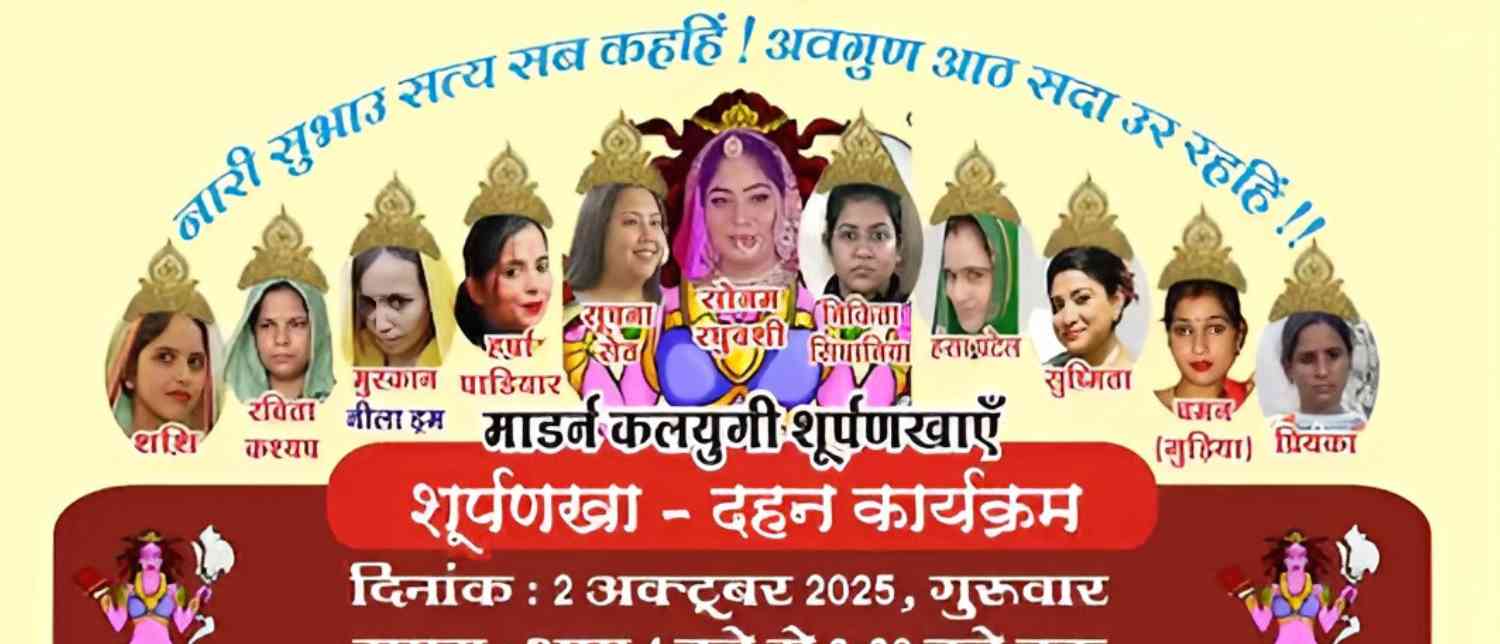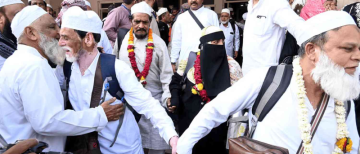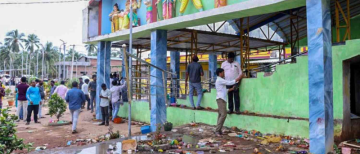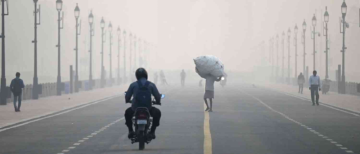Dussehra is a major Indian festival celebrated every year to mark the victory of good over evil. Traditionally, it involves burning huge effigies of the demon king Ravana, symbolizing the triumph of Lord Rama over evil. However, this year in Indore, Madhya Pradesh, a new and controversial twist is being introduced called “Surpanakha Dahan.” Instead of just burning Ravana’s effigy, the organizers have planned to burn an 11-headed effigy of Surpanakha, a demoness from the epic Ramayana, with faces representing women accused of serious crimes. This new event is stirring much debate across the city and beyond.

Surpanakha is a character from the Ramayana, sister of Ravana, often symbolizing mischief and evil. The organizers of this event have created a giant effigy with 11 heads, each face representing a woman accused or convicted of heinous crimes such as murder, fraud, cybercrime, trafficking, and poisoning. Central to the effigy is the face of Sonam Raghuvanshi from Indore, who has been accused of plotting her husband’s murder during their honeymoon, along with several others from different parts of India known for serious allegations.
The event is organized by a group called Paurush, which claims to represent men who are victims of abuse by their wives. Ashok Dashora, the head of the group, explains that the symbolism is meant to show that evil is not confined to one gender and that society must confront “modern-day Surpanakhas” who spread harm.
The Surpanakha effigy will be paraded through the streets of Indore accompanied by drums and traditional performances before being burnt at the Mahalaxmi Nagar Mela Ground on the evening of Dussehra. The intention is to extend the meaning of Dussehra beyond the traditional mythological narrative of Rama versus Ravana to include contemporary social issues. The organizers argue that just as Ravana symbolized evil in his time, today’s society faces new evils that should be eradicated regardless of whether they come from men or women.

This decision has generated significant discussion and controversy. Supporters view it as a bold and necessary statement to highlight crimes committed by women, which can sometimes be overlooked in societal debates dominated by male perpetrators. They see it as a way to balance the discourse and bring attention to male victims of abuse. For them, the festival becomes a platform to raise awareness about evolving social realities, not just mythology.
On the other hand, critics argue that this move distorts the traditional cultural significance of Dussehra. They worry it may encourage gender divisiveness or reinforce negative stereotypes against women based on isolated criminal cases. Others feel that singling out female criminals in this dramatic way oversimplifies complex social problems and could promote stigmatization rather than understanding or reform. Many advocate that crime and morality should be judged by law and social systems rather than symbolic public shaming.
Dussehra has long been a festival with deep roots in Indian culture and mythology, representing the victory of good over evil. However, traditions evolve as societies change. The introduction of Surpanakha Dahan in Indore exemplifies how cultural practices can be reinterpreted to address contemporary challenges in society.

From an objective viewpoint, this event raises important questions about justice, gender roles, and the social recognition of different forms of wrongdoing. While it is vital to acknowledge the invisible victims and injustices faced by all individuals, it is equally important to maintain respect for cultural sentiments and avoid exacerbating social divides.
The key insight here is that festivals and cultural symbols often serve as mirrors reflecting societal values and concerns at a given time. Indore’s Surpanakha Dahan challenges people to reconsider who represents “evil” and how society chooses to publicly deal with crime and morality. Whether this initiative becomes a positive conversation starter or a source of division will depend on how the community continues to engage with these complex issues beyond the symbolic act itself.
Surpanakha Dahan in Indore this Dussehra is a significant departure from traditional festivities, turning to contemporary social themes by burning effigies of women accused of serious crimes. Organized by a group supporting male abuse victims, it seeks to redefine evil beyond mythology to the modern world. Public opinion remains divided, with some appreciating the awareness it raises and others cautioning against distorting cultural traditions.

Ultimately, this event serves as a vivid example of how ancient customs can be adapted to shine a light on current societal issues and spark debate. The hope is that such discussions will deepen collective understanding and inspire more nuanced approaches to justice and gender dynamics in society.
With inputs from agencies
Image Source: Multiple agencies
© Copyright 2025. All Rights Reserved. Powered by Vygr Media.






















